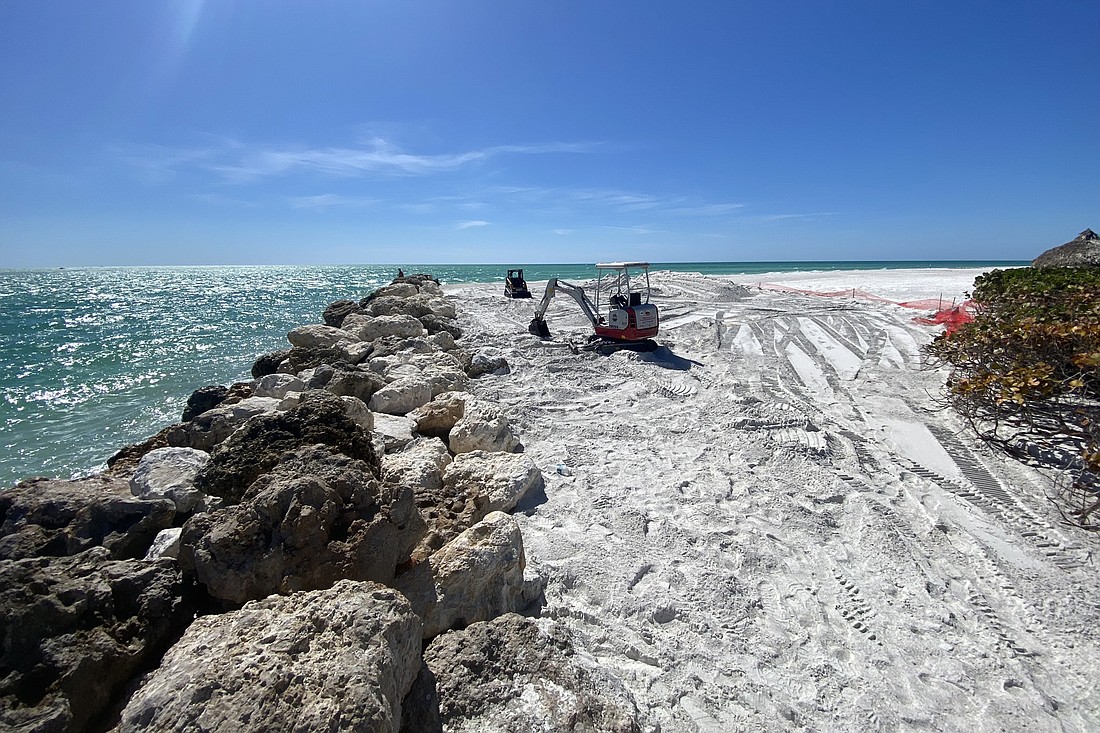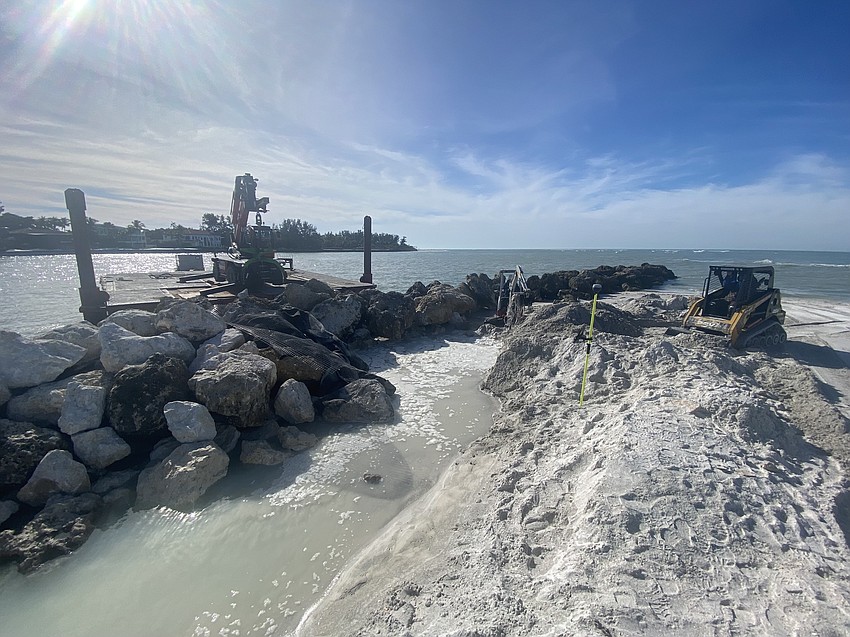- May 3, 2024
-
-
Loading

Loading

A refurbished and stronger New Pass Groin is now on the south end of Longboat Key.
At the start of March, the New Pass Groin Tightening Project wrapped up. The project team for this project included First Line Coastal, Sea & Shoreline LLC and Olsen Associates Inc.
Assistant Director of Public Works Charlie Mopps said that the crew finished all of the structural work and final surveys were underway. In all, the project took about four months to complete after beginning in November 2023.
The project cost about $489,415, according to a previous report from Director of Public Works Isaac Brownman.
The groin was originally installed back in the 1970s and was reconstructed in 1998. It was time for another repair and to tighten the structure.
Keeping a groin structure tight is important to prevent beach erosion. This project added rock, as well as brought existing rocks tighter, to hopefully limit the amount of sand that passes through.
Overall, this project helps to keep the sand where it’s intended to be. It also helps to keep the sand from accreting in New Pass, a popular channel for boaters in Sarasota Bay.

As a part of the tightening project, Sea & Shoreline installed about 160 tons of underlayer stone and 150 tons of armor stone.
The crew also inserted about 1,500 square yards of geotextile material and 710 square yards of geogrid material, according to the company’s website.
Geogrid and geotextile materials are both synthetic materials used to stabilize soils and rocks. Geotextile is more of a fabric than geogrid, which is sturdier.
Both of the materials will help to keep the groin in place and make it less permeable. But the groin will still be semi-permeable to maintain the natural flow of the ocean.
The tightening project was originally supposed to start in January 2023, but after a holdup with the permits, work had to wait until after the 2023 turtle season wrapped.